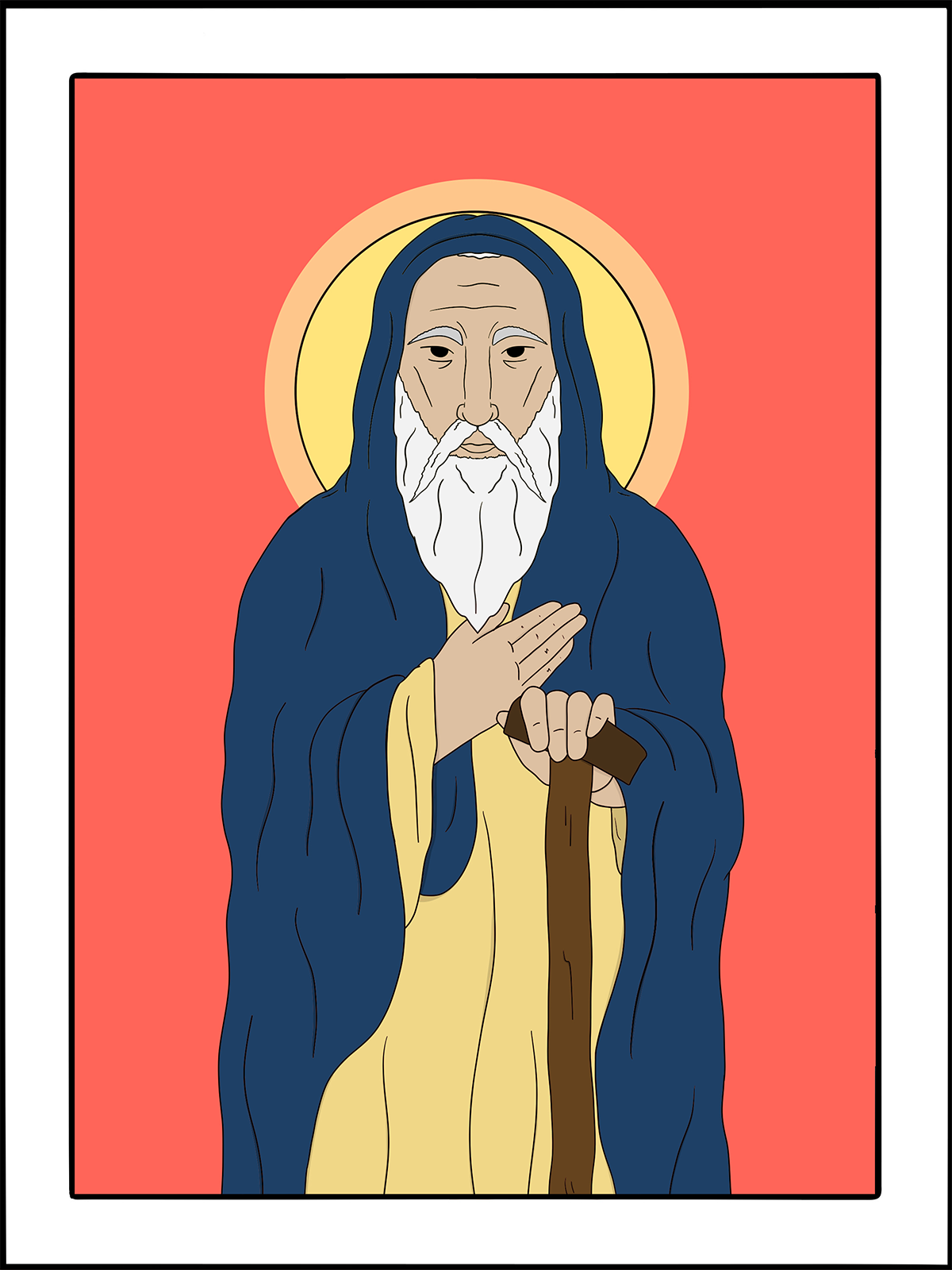
May 15
Pachomius of Tabenissi
Monastic, 348
art by Rev. Kirsten Kohr of Geneva, Ohio Set us free, O God, from all false desires, vain ambitions, and everything that would separate us from your love; that, like your servant Pachomius, we might give ourselves fully to a life of discipleship, seeking you alone and serving those whom you have given us to serve; through Jesus Christ, our only mediator and advocate. Amen.
Pachomius is commonly regarded as the founder of coenobitic monasticism, the form of Christian monasticism in which members live together in community rather than individually as hermits, and he was the author of the first formal monastic rule of life.
Born to a pagan family in 292, Pachomius first encountered Christianity when he was imprisoned as part of a forced military conscription. The Christians of the city visited everyone in the prison, bringing them food, supplies, and comfort, and Pachomius was astonished. He asked the other prisoners, “Why are these people so good to us when they do not even know us?” They answered, “They are Christians, and therefore they treat us with love for the sake of the God of heaven.” When he was released from prison, he was baptized and began to lead an ascetic life of manual labor, prayer, and care for the poor.
In time, a community of people was drawn to Pachomius, and they began to organize themselves into a formal monastic community. This way of life was particularly attractive to those who were drawn to monasticism but could not withstand the hardship of a solitary life, particularly those who might be elderly or ill or very young. Before long, a federation of monastic communities was created, with houses for both men and women, which were organized into a common structure. Pachomius and his disciples wrote the first monastic rules to organize the life of these communities.
The new monastic movement was controversial in its day, and was initially opposed by many bishops and priests. When the monks were building their first monastery, the local bishop came with a mob to try to tear it down. Others came to respect the monks and their way of life but wanted to unite them more closely to official church institutions. The bishops Serapion and Athanasius visited the community with the hope of ordaining Pachomius to the priesthood, but he hid from them until they finally went away. Indeed, the life of Pachomius states that originally “he did not want any clergy in his monasteries at all for fear of jealousy and vainglory.” In time, however, the new monastic movement and the church hierarchy developed a mutual respect for the differing gifts and responsibilities that each of them bore within the church.
By the time that Pachomius died, his monastic federation included several thousand monks and nuns, and within a generation the monastic movement would spread from Egypt to Palestine, Turkey, and Western Europe.
Excerpted directly from “Lesser Feasts and Fasts 2022,” p. 230-231.

